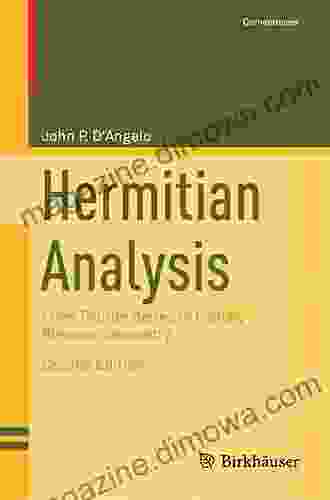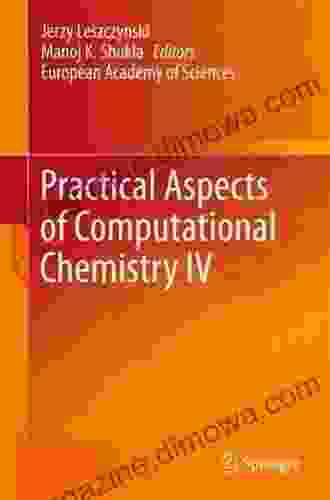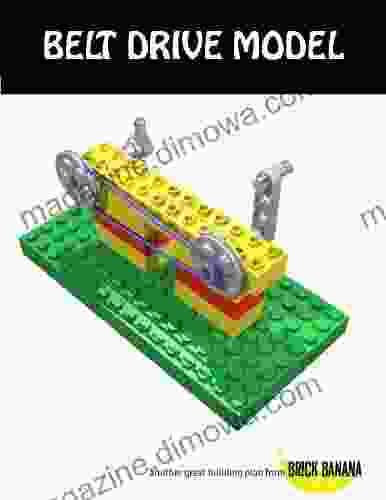Practical Aspects of Computational Chemistry: Unlocking the Building Blocks of Matter

Delve into the Realm of Computational Chemistry
Computational chemistry, a burgeoning field at the intersection of chemistry and computer science, empowers us to unravel the enigmatic world of molecular structures and chemical reactions through the lens of computational simulations. This groundbreaking approach transcends the limitations of traditional experimental methods, enabling us to probe the behavior of matter at the atomic and molecular levels with unprecedented detail and accuracy.
Essential Concepts: Laying the Foundation
To embark on this captivating journey, let's delve into the fundamental concepts that underpin computational chemistry:
4.5 out of 5
| Language | : | English |
| File size | : | 26055 KB |
| Text-to-Speech | : | Enabled |
| Screen Reader | : | Supported |
| Enhanced typesetting | : | Enabled |
| Word Wise | : | Enabled |
| Print length | : | 655 pages |
Quantum Mechanics: The Bedrock of Matter's Behavior
Quantum mechanics, with its intricate mathematical framework, provides the theoretical foundation for understanding the behavior of molecules and atoms. It unveils the wave-particle duality of matter, where particles such as electrons exhibit properties of both particles and waves, and the concept of energy quantization, which dictates that energy can only exist in discrete packets or quanta.
Molecular Mechanics: Simulating Molecular Motion
Molecular mechanics, a powerful technique rooted in classical physics, enables us to simulate the movements of atoms within molecules. By employing force fields, which define the interactions between atoms, we can gain insights into molecular dynamics, conformational changes, and the behavior of complex biological systems.
Electronic Structure Methods: Exploring the Quantum Realm
Electronic structure methods delve into the intricate world of quantum mechanics to calculate the electronic structure of molecules and materials. These methods provide a deeper understanding of chemical bonding, electronic transitions, and molecular properties. They empower us to predict and interpret a wide range of phenomena, from UV-Vis spectra to the behavior of semiconductors.
Statistical Mechanics: Unveiling Macroscopic Properties
Statistical mechanics bridges the gap between microscopic and macroscopic scales, allowing us to comprehend the collective behavior of large ensembles of molecules. This powerful technique provides insights into thermodynamics, phase transitions, and the behavior of fluids and solids.
Methods and Algorithms: The Computational Toolkit
Armed with these essential concepts, let's explore the diverse array of methods and algorithms that computational chemists employ to tackle complex problems:
Hartree-Fock Theory: The Foundation of Molecular Orbital Theory
Hartree-Fock theory, a cornerstone of computational chemistry, provides an approximate solution to the Schrödinger equation that governs the behavior of electrons in atoms and molecules. It forms the foundation for molecular orbital theory, which describes the distribution of electrons within molecules.
Density Functional Theory: A Versatile Approach
Density functional theory (DFT),a widely used method in computational chemistry, offers a computationally efficient approach to calculate the electronic structure of molecules and materials. It has proven invaluable for studying a vast range of systems, from small molecules to complex biological molecules.
Monte Carlo Methods: Sampling the Molecular Landscape
Monte Carlo methods, inspired by the world of gambling, introduce an element of randomness to computational chemistry. They enable us to sample the vast configuration space of molecules and materials, providing insights into equilibrium properties, reaction pathways, and free energy landscapes.
Molecular Dynamics Simulations: Witnessing Molecules in Motion
Molecular dynamics simulations, a powerful technique in computational chemistry, allow us to observe the dynamic behavior of molecules over time. By integrating the equations of motion for individual atoms, we can witness the unfolding of molecular processes, such as protein folding, chemical reactions, and the diffusion of molecules in solution.
Applications: The Power of Computational Chemistry
The versatility of computational chemistry extends to a myriad of applications across diverse scientific disciplines:
Drug Discovery: Designing Molecules for Health
Computational chemistry plays a pivotal role in drug discovery, enabling researchers to design and screen potential drug molecules for their efficacy and safety. By simulating the interactions between molecules and biological targets, we can accelerate the development of new treatments for diseases.
Materials Science: Engineering the Future
In the realm of materials science, computational chemistry empowers us to design and optimize materials with tailored properties. By understanding the structure-property relationships of materials, we can innovate new materials for applications ranging from energy storage to aerospace engineering.
Biochemistry: Unraveling the Secrets of Life
Computational chemistry has become an indispensable tool in biochemistry, providing insights into the structure and function of proteins, nucleic acids, and other biomolecules. By simulating complex biological systems, we can decipher the mechanisms of enzyme catalysis, protein-protein interactions, and the dynamics of cellular processes.
: A Journey into the Quantum Realm
Computational chemistry, a rapidly evolving field at the forefront of scientific discovery, empowers us to explore the intricate world of matter at the atomic and molecular levels. Through the lens of computation, we can unravel the complexities of chemical reactions, design new materials, and gain a deeper understanding of biological processes.
As we delve further into the quantum realm, computational chemistry will undoubtedly continue to revolutionize our comprehension of the molecular world and drive groundbreaking innovations across diverse scientific disciplines. Embark on this captivating journey and discover the practical aspects of computational chemistry, unlocking the secrets of matter and shaping the future of science.
4.5 out of 5
| Language | : | English |
| File size | : | 26055 KB |
| Text-to-Speech | : | Enabled |
| Screen Reader | : | Supported |
| Enhanced typesetting | : | Enabled |
| Word Wise | : | Enabled |
| Print length | : | 655 pages |
Do you want to contribute by writing guest posts on this blog?
Please contact us and send us a resume of previous articles that you have written.
 Book
Book Novel
Novel Page
Page Chapter
Chapter Text
Text Story
Story Genre
Genre Reader
Reader Library
Library Paperback
Paperback E-book
E-book Magazine
Magazine Newspaper
Newspaper Paragraph
Paragraph Sentence
Sentence Bookmark
Bookmark Shelf
Shelf Glossary
Glossary Bibliography
Bibliography Foreword
Foreword Preface
Preface Synopsis
Synopsis Annotation
Annotation Footnote
Footnote Manuscript
Manuscript Scroll
Scroll Codex
Codex Tome
Tome Bestseller
Bestseller Classics
Classics Library card
Library card Narrative
Narrative Biography
Biography Autobiography
Autobiography Memoir
Memoir Reference
Reference Encyclopedia
Encyclopedia Thierry Poibeau
Thierry Poibeau Stewart Giles
Stewart Giles Susan Lumpkin
Susan Lumpkin John James Audubon
John James Audubon John Forman
John Forman Richard Alan Ryerson
Richard Alan Ryerson Jim Noles
Jim Noles Martin Fernandez
Martin Fernandez John Biggar
John Biggar Joan Hiatt Harlow
Joan Hiatt Harlow John C Stipa
John C Stipa The Editors Of Outside Magazine
The Editors Of Outside Magazine Joe Bruno
Joe Bruno Yvonne Jones
Yvonne Jones Joseph Mctaggart
Joseph Mctaggart Jim Miles
Jim Miles Shannon Kennedy
Shannon Kennedy Scott Brown
Scott Brown Johannes M Henn
Johannes M Henn Rabea Chaudhry
Rabea Chaudhry
Light bulbAdvertise smarter! Our strategic ad space ensures maximum exposure. Reserve your spot today!

 Foster HayesStick to These Strategies and Slay: Unleash Your Inner Warrior and Conquer...
Foster HayesStick to These Strategies and Slay: Unleash Your Inner Warrior and Conquer... Julian PowellFollow ·15.1k
Julian PowellFollow ·15.1k Ray BlairFollow ·10.9k
Ray BlairFollow ·10.9k Caleb CarterFollow ·9.3k
Caleb CarterFollow ·9.3k Stephen FosterFollow ·4.6k
Stephen FosterFollow ·4.6k Dan BellFollow ·4.2k
Dan BellFollow ·4.2k Cole PowellFollow ·2.1k
Cole PowellFollow ·2.1k Davion PowellFollow ·5.9k
Davion PowellFollow ·5.9k Jack PowellFollow ·8.3k
Jack PowellFollow ·8.3k

 Joshua Reed
Joshua ReedTake Your Marketing Business Into The Next Level
Are you ready to...

 Aaron Brooks
Aaron BrooksFrom Fourier to Cauchy-Riemann: Geometry Cornerstones
From Fourier to Cauchy-Riemann: Geometry...

 Orson Scott Card
Orson Scott CardUnveiling the Art of Mitigation Banking: A Comprehensive...
In the intricate dance between...

 Victor Hugo
Victor HugoUnleash Your Creativity: A Journey Through the Enchanting...
Prepare to be captivated as we...

 Duncan Cox
Duncan CoxLoad of Bull: An Englishman's Adventures in Madrid
By Simon Bunce ...
4.5 out of 5
| Language | : | English |
| File size | : | 26055 KB |
| Text-to-Speech | : | Enabled |
| Screen Reader | : | Supported |
| Enhanced typesetting | : | Enabled |
| Word Wise | : | Enabled |
| Print length | : | 655 pages |












